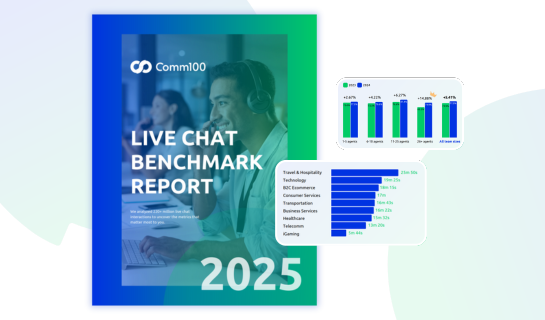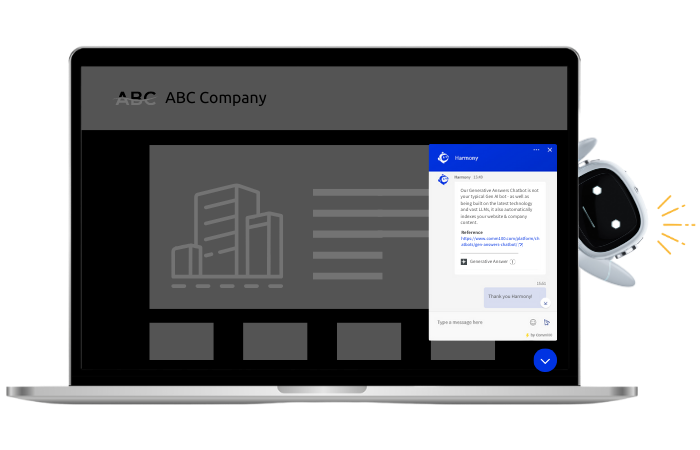When one thinks of providing a great customer experience, it’s easy to visualize some of the more common aspects of customer service – employees with customer friendly attitudes, giving the customer their money’s worth and promptly resolving any concerns or issues. These are all important; however, with the customer experience playing field being leveled by new technology and the almighty Internet, it’s important to focus on another key aspect – Accessibility. In other words, can the customer reach your company when they have questions/concerns or need assistance in making a purchasing decision?
Live Chat Benchmark Report 2025
Discover the latest live chat benchmark data to understand how well your team is performing compared to the competition and where it needs to improve.
Download the report
Report
Channels of Accessibility
Prior to the technology revolution, there were primarily three methods for the customer to interact with product/service providers – voice (phone), face to face or snail mail. We’re talking a long time ago! Advances in technology over the years have added at least five additional channels to the list – email, web chat, SMS, phone apps and social media.
According to a Forrester Research report from March of 2013, voice remains the most widely used method by consumers with 71% stating this is their preferred choice when communicating with companies. Email is the third most widely used channel with 58% of online adults choosing this method of communication.
Customer satisfaction with social media interactions is currently low as companies have yet to fully develop and integrate business practices for this channel. Web chat has increased in popularity with customers as the Forrester Research report indicates this channel has risen in popularity as adoption rose from 30% to 43% between 2009 and 2012. This channel also has the highest satisfaction rating after voice with consumers. It’s critical for companies to make the customer driven changes in order to provide the most desired manner of accessibility.
Web Chat – Customers Love It!
Stats from eDigital Customer Service Benchmark where 2,000 consumers were surveyed regarding their experiences with various customer service channels indicate web chat has the highest satisfaction rating. While only 24% of those surveyed utilized web chat, 73% stated they were highly satisfied with their experience. In comparison, phone and SMS had satisfaction rates of 44% and 41% respectively.
Customers love live chat for several reasons. The main reason given by those who prefer using live chat is the ability to get their questions answered quickly with 79% of respondents falling into this category. In addition, 51% of respondents indicated they can multi-task when communicating via web chat and 46% say it’s just a better method of communicating.
Other reasons given include:
- I can control the conversation
- I can chat while at work
- I received better information than if I emailed
- I don’t like talking on the phone
It’s clear that customers are finding multiple reasons for turning to web chat as a viable communication channel for conducting business.
Web Chat Expectations
In considering the above statistics, it’s pretty easy to see what customers expect when chatting online with companies. Quick response by the web chat agent is primary as customers don’t want to be reminded of what can happen when utilizing the phone channel – being placed on hold. It’s imperative for companies to optimize internal operations to allow those responsible for providing the web chat experience the ability to meet this important customer expectation – don’t make me wait! Customers also expect the person on the other end of the chat to have all of the answers.
Competency is a key to one’s success as a web chat agent. Not only do customers expect to receive correct information, they expect to be serviced quickly. Companies must make sure that web chat agents are equipped with the necessary training and product/service information to insure customers are provided the proper solutions to their inquiries in a timely manner.
Just as in phone or face to face communications, customers expect courteous communication from web chat agents including advising the customer when there will be a delay in responding to an inquiry, thanking the customer for waiting and providing the best customer service experience in meeting the customer’s needs. Web chat agents must take care with word choice and punctuation as these are indicative of one’s attitude when communicating via this channel.
Recommended for you: [eBook] 101 Ready-to-Use Live Chat Scripts for Both Sales and Customer Service
May I Help You?
In the old days, it was common for sales personnel to greet prospective customers visiting a storefront with “How may I help you today?” or “Is there something I can help you find?” This is called being proactive with the customer. Even when customers don’t actually need assistance, most still want to be asked if they require help. It’s important to be proactive with prospective customers.
Companies now have the ability to be proactive with prospective online customers. Here at Comm100, we believe that good customer communication can make a difference for your business through helping you build stronger customer relationships and getting better business performance. Our live chat product allows companies to proactively reach out to website visitors in attempt to let the visitor know – “Hey, I’m here if you need assistance!” Proactively engaging website visitors indicates a willingness to deliver a great customer experience which can certainly lead to customer loyalty and long term customer relationships.
Recommended for you: 8 Proactive Chat Best Practices with Ready-to-Use Scripts
Chat Away in 2014
We’ve discussed the various customer communication channels – phone, email, SMS, etc. Each has its respective place in consumers’ hearts in regards to accessibility. The evidence is apparent. The use of web chat as a viable alternative is on the rise as customers become more confident in the ability of web chat agents to provide a timely and satisfactory customer experience via this channel. Make sure your company considers web chat as an accessibility option in your goal to provide great customer experiences.
Live Chat Benchmark Report 2025
Discover the latest live chat benchmark data to understand how well your team is performing compared to the competition and where it needs to improve.
Download the report
Report







